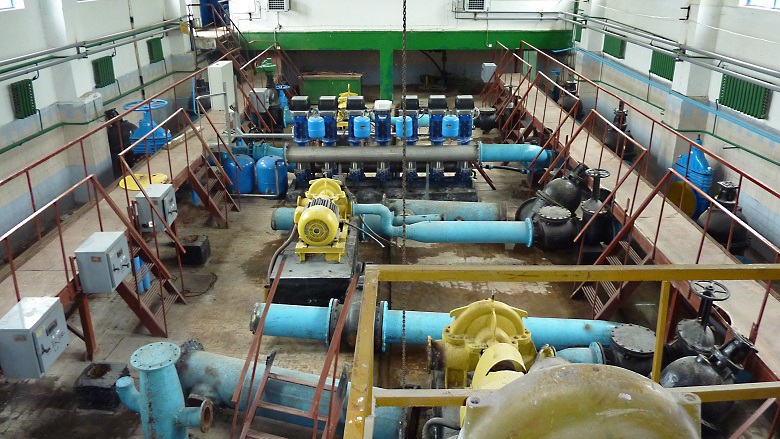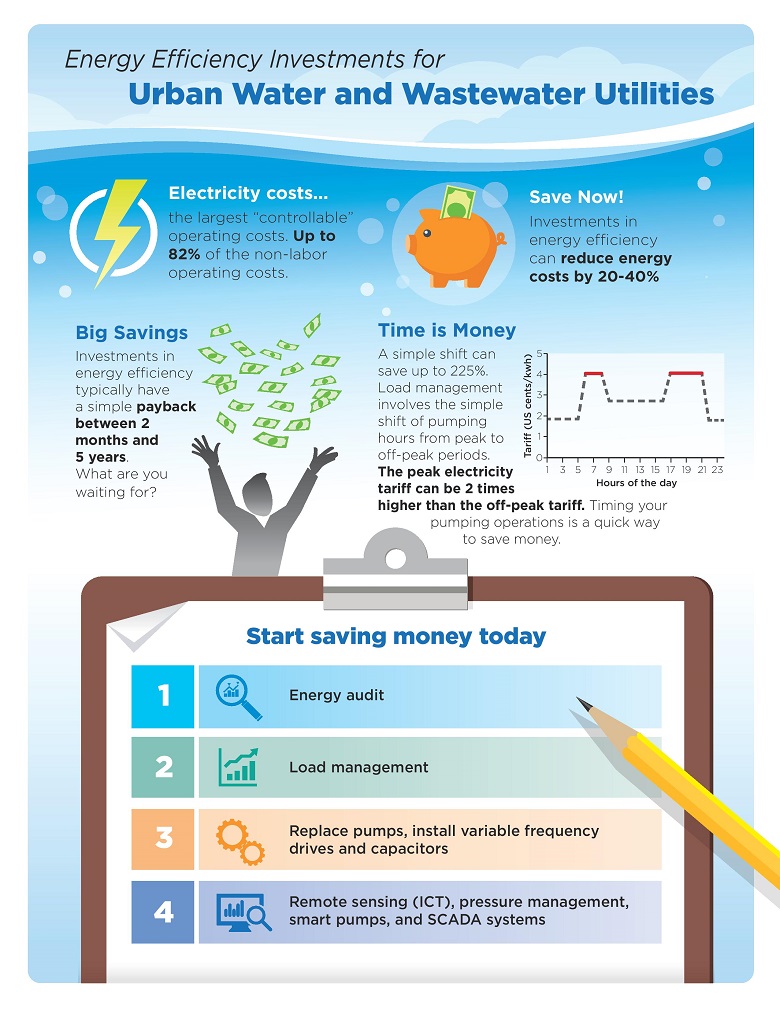Mexico: The city of Monclova installed variable speed drives, improved pumping efficiency, replaced old pumping equipment with more energy efficient pumps and optimized pumping operational schedules, thereby reducing the energy intensity of its water network by 23%, improved operational efficiency, and increased revenues (by supplying additional customers) with a simple payback of 1.9 years. Bosnia and Herzegovina: The town of Mostar implemented pump upgrades and replacements, greater use of gravity-fed water, and water leakage detection and repairs, to reduce energy use by 40 percent, declining from 9.4 MWh in 2001 to 5.6 MWh in 2004. These energy savings translated into an estimated annual electricity cost savings of USD128,400 for the town. Armenia: The city of Yerevan engaged a competitively selected management contractor to undertake a performance-based contract that included rehabilitation of pumping stations, increasing gravity-fed water supply, trimming pump impellors, and upgrading pumps. The energy efficiency investments provided an annual cost savings of USD 4.8 million with an investment of USD 16.8 million, yielding a payback of 3.5 years. Brazil: The city of Campinas established an energy management program, including specific energy efficiency improvements, as a part of operational management to improve the overall operational efficiency and to enhance financial performance. In their Capivari water treatment plant, EE measures resulted in annual energy savings of USD 200,000 (1.8 GWh) with an investment of USD 1.3 million, for a simple payback of about 6.5 years. Source: ESMAP, Energy Efficient Cities Case Studies Database, www.esmap.org/node/231 |


